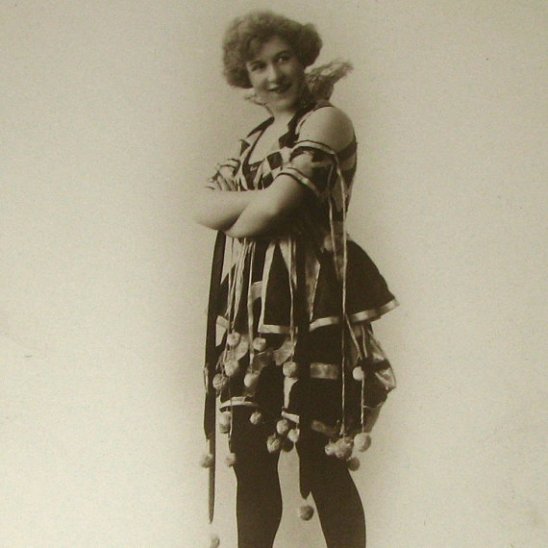Ethel Warwick (1882 – 1951) was the daughter of Frank and Maude, born in Hardingstone, Northampton. Her education began in Margate and Hampstead, but by the early 1890’s she was studying to become an artist at the London Polytechnic.
She became an artists model to help pay her tuition there, which led to her meeting Herbert Draper, who used her as a model for several of his paintings, including The Lament for Icarus. Through him she became a favoured model for several artists, including John William Godward, who painted several portraits of her, and Linley Sambourne, for whom she posed nude in a series of photographic studies. She was also sketched by James McNeill Whistler.
She began training as an actress at Henry Neville’s acting school in the late 1890’s, and first appeared on stage at the Grande Theatre in Fulham in July 1900 as Emilie de L’Esparre in The Corsican Brothers. She later appeared in several films.

Ethel Warwick published by Rotary Photographic Co Ltd bromide postcard print, © National Portrait Gallery, London, circa 1906 via

Ethel Warwick by Reautlinger via

Ethel Warwick by Reautlinger via

Ethel Warwick, 1900 via





























